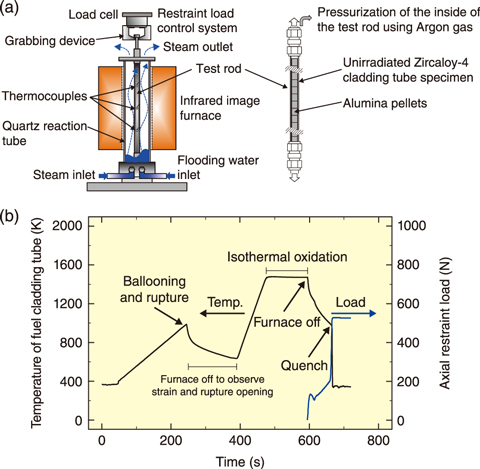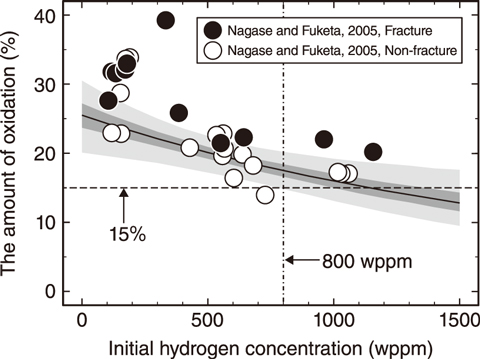
Fig.2-7 Overview of LOCA-simulated integral thermal shock test

Fig.2-8 Fracture limit uncertainty of unirradiated Zircaloy-4 cladding tube
Loss-of-coolant accidents (LOCAs) caused by breaks in the primary piping or the like are postulated in the safety design of nuclear power plants. When the core cooling is insufficient during a LOCA, the fuel rods heat up, allowing the fuel cladding tubes to be oxidized in steam. If the fuel cladding tube is significantly embrittled due to the oxidation, it may fracture when quenched from the coolant injection from the emergency core cooling system, resulting in the loss of a reactor core’s coolable geometry during the LOCA. Maintenance of the reactor core’s coolable geometry during the LOCA is commonly evaluated based on the fracture limit of fuel cladding tubes. In previous studies, the fracture limit was evaluated deterministically based on experimental results obtained under conservative conditions. Therefore, the fracture limit uncertainty derived from experiments and evaluations has not been quantitatively evaluated.
Here, the uncertainty of fuel cladding tube’s fracture limit was evaluated and quantified using Bayesian statistics. To do so, LOCA-simulated integral thermal shock tests were first performed using unirradiated Zircaloy-4 cladding tube specimens (Fig.2-7). The obtained results concerning the fracture and non-fracture of the specimens were converted into a binary format, using fracture = 1 and non-fracture = 0. A generalized linear model was then applied to the binary data under an assumption of a Bernoulli distribution. Finally, a fuel fracture probability estimation model was developed as a function of the amount of oxidation of the specimens after the test (i.e., the ratio of metal layer thickness reduced due to oxidation to initial metal layer thickness in the specimen) and the pre-test hydrogen concentration in the specimen (denoted as “initial hydrogen concentration”). Regression coefficients of this model were estimated using Bayesian inference and the fracture limit uncertainty of the unirradiated Zircaloy-4 cladding tube was quantified using probability; the results are shown in Fig.2-8.
When evaluating the fracture limit considering uncertainty based on probability theory, the probability of a fracture at that point and the extent to which the obtained samples represent the true population must both be considered. Here, the fracture limit was defined as the limit representing a 5% fracture probability with 95% confidence based on the accuracy of the fuel fracture probability estimation model and practices in safety assessments of nuclear facilities in Japan and overseas. The fracture limit defined in this way revealed to be higher than 15% in the amount of oxidation for initial hydrogen concentrations of up to 800 wppm even considering the uncertainty.
This result enables the quantitative evaluation of the safety margin of the fracture limit of the fuel cladding tube, which is important to maintain the coolable geometry of the reactor core during the LOCA.